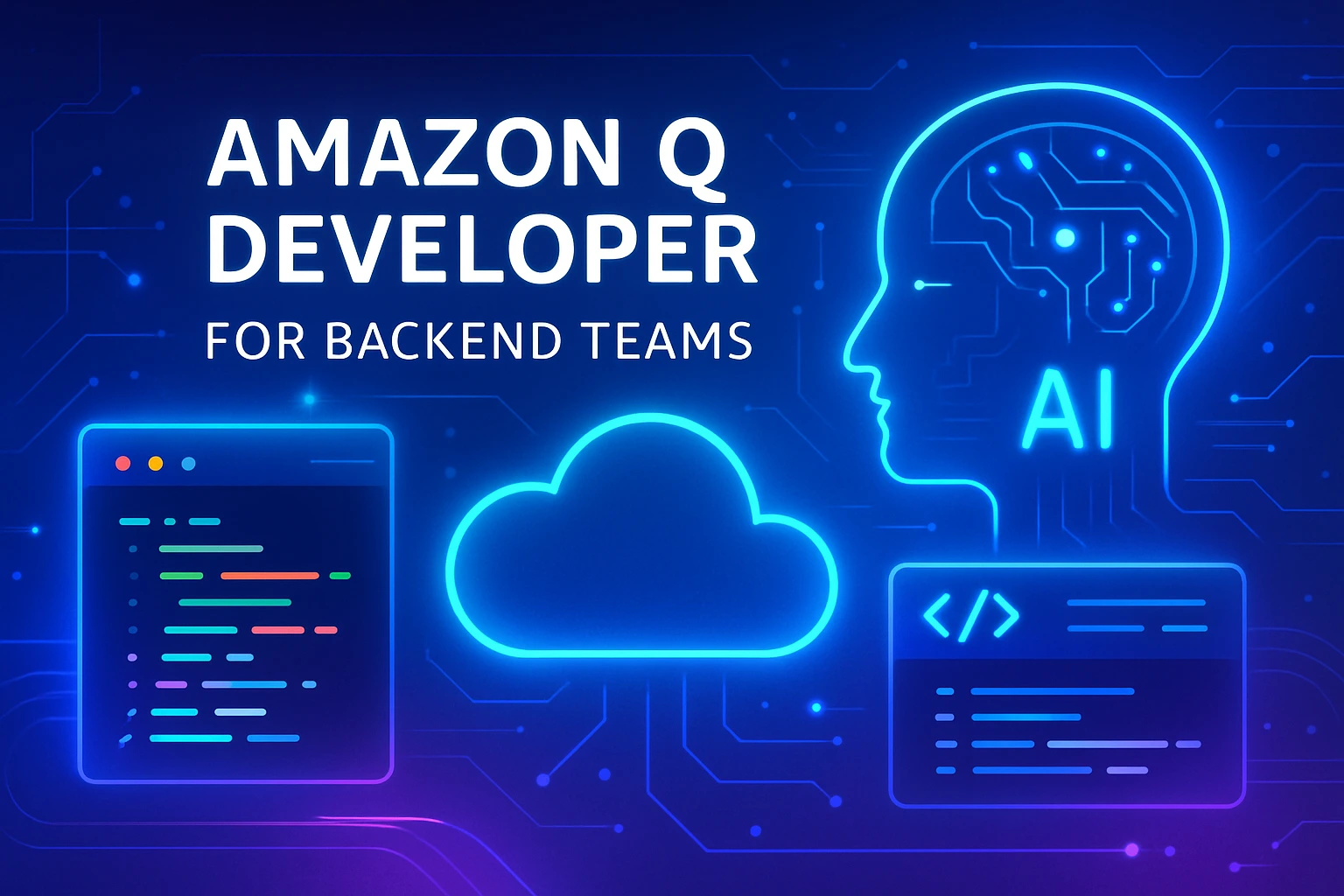
How a BDE Connects Business Vision With Technology
How a BDE Connects Business Vision With Technology Kumkum Kumari 21/11/2025At Speqto, we work with organizations that are constantly evolving entering new markets, scaling operations, or […]


AI coding assistants are changing the way software gets written and shipped.Amazon Q Developer, the newest helper from AWS, offers context-aware code suggestions, automatic security checks, and ready-made snippets that know the AWS ecosystem inside out. This article breaks down whether adding Q Developer to the toolbox makes sense for today’s backend teams.
By weaving AWS best practices into every suggestion, Q Developer aims to trim boilerplate, spot issues early, and speed up release cycles—all without piling on extra tools.
Shipping secure, scalable APIs is often slowed down by repetitive glue code, lengthy reviews, and endless patching. Standard IDEs lack cloud awareness, while separate scanners create extra steps. What teams really need is one assistant that writes solid code and checks it against real-world security rules.
Speqto’s backend crew ran a 30-day pilot on a Node.js service that tracks trading stats. Q Developer lived inside VS Code and was measured against GitHub Copilot and plain manual coding. Metrics included endpoint-scaffolding speed, vulnerabilities found, and comments left during pull-request reviews.
– Amazon Q Developer – inline suggestions, chat-to-code, automated PR reviews.
– GitHub Copilot – baseline AI pair-programmer.
– Node.js 18 + Express – REST framework.
– Jest – unit testing and coverage.
– AWS CloudWatch & X-Ray – logs, metrics, and traces.
– Prime the assistant: give Q your ESLint / Prettier rules so its code matches house style.
– Turn on security gates: treat Q’s PR review as a blocker that catches secrets before merge.
– Measure the change: track lead time, defects, and review effort before and after adoption.
– Avoid lock-in when needed: ask explicitly for generic libraries if multi-cloud is a goal.
After one month, Q Developer cut endpoint setup time by 58 %,caught 50 % more issues in review, and saved roughly 70 hours across a five-person team. Deployments jumped from four to six a week without adding staff.
Performance stayed solid: generated code handled 2 000 RPS with a median latency of 25 ms, and security scans flagged three secret-leak issues that manual review missed.
Diagram: Developer → VS Code + Amazon Q → Git PR → Automated Review → CI/CD Deploy.
Alt text: “Amazon Q Developer workflow for backend API delivery.”
Switching one microservice’s PR flow to Q’s automated reviews cut average review time from 42 minutes to 18 minutes. High-severity issues spotted before merge fell from seven to one over three sprints, thanks to earlier detection and fix.
For backend teams already invested in AWS, Amazon Q Developer delivers clear productivity gains and stronger security, more than justifying its modest fee. Start with a pilot, wire Q’s review into CI/CD, and track the numbers to see the ROI for yourself.

How a BDE Connects Business Vision With Technology
How a BDE Connects Business Vision With Technology Kumkum Kumari 21/11/2025At Speqto, we work with organizations that are constantly evolving entering new markets, scaling operations, or […]

Apache JMeter Demystified: Your 7-Stage Blueprint for a Seamless First Performance Test
Apache JMeter Demystified: Your 7-Stage Blueprint for a Seamless First Performance Test Megha Srivastava 21 November 2025 In the intricate world of software development and deployment, ensuring a robust user experience is paramount. A slow application can quickly deter users, impacting reputation and revenue. This is where Apache JMeter emerges as an indispensable tool, offering […]

STRIDE Simplified: A Hands-On Blueprint for Pinpointing Software Threats Effectively
STRIDE Simplified: A Hands-On Blueprint for Pinpointing Software Threats Effectively Megha Srivastava 21 November 2025 In the intricate landscape of modern software development, proactive security measures are paramount. While reactive incident response is crucial, preventing vulnerabilities before they become exploits is the hallmark of robust software engineering. This is where threat modeling, and specifically the […]

From Static to Streaming: A Practical Developer’s Guide to Real-time Applications Using GraphQL Subscriptions
From Static to Streaming: A Practical Developer’s Guide to Real-time Applications Using GraphQL Subscriptions Shakir Khan 21 November 2025 The Paradigm Shift: From Static to Streaming Experiences In an era where user expectations demand instant gratification, the web has rapidly evolved beyond its static origins. Today, a modern application’s success is often measured by its […]

The TanStack Query Edge: Deep Dive into Advanced Caching for Optimal Application Speed
The TanStack Query Edge: Deep Dive into Advanced Caching for Optimal Application Speed Shubham Anand 21 November 2025 In the relentless pursuit of seamless user experiences and lightning-fast web applications, data management stands as a formidable challenge. Modern front-end frameworks demand intelligent solutions to handle asynchronous data, and this is precisely where TanStack Query (formerly […]